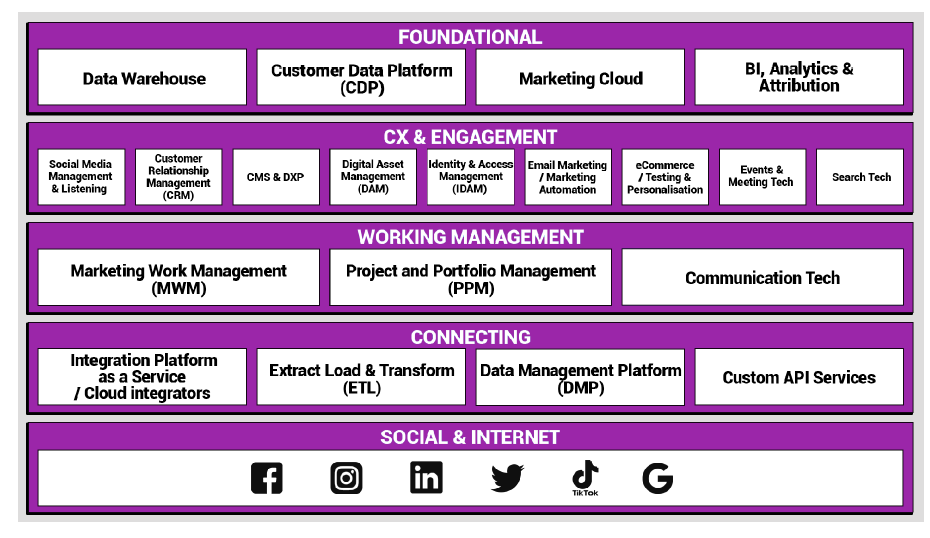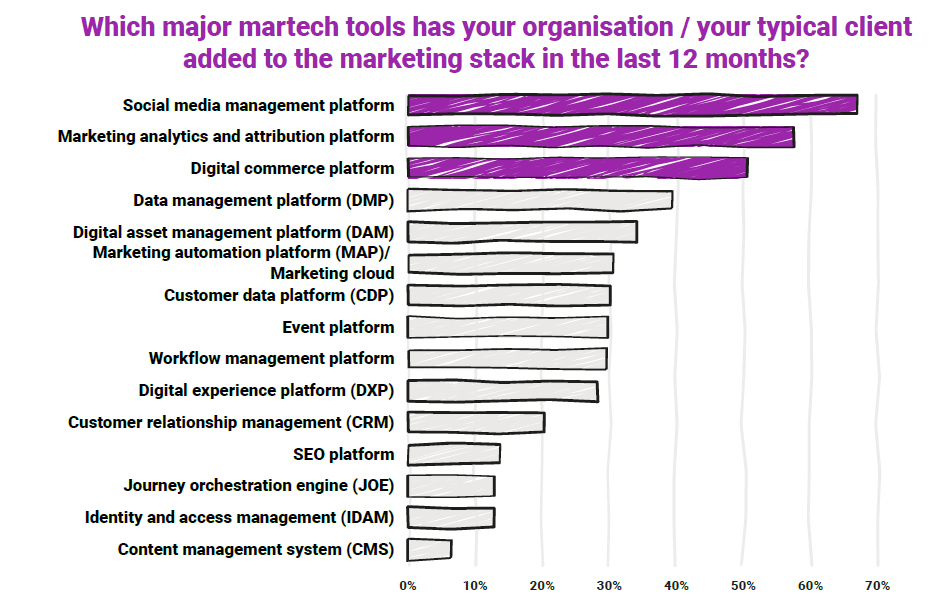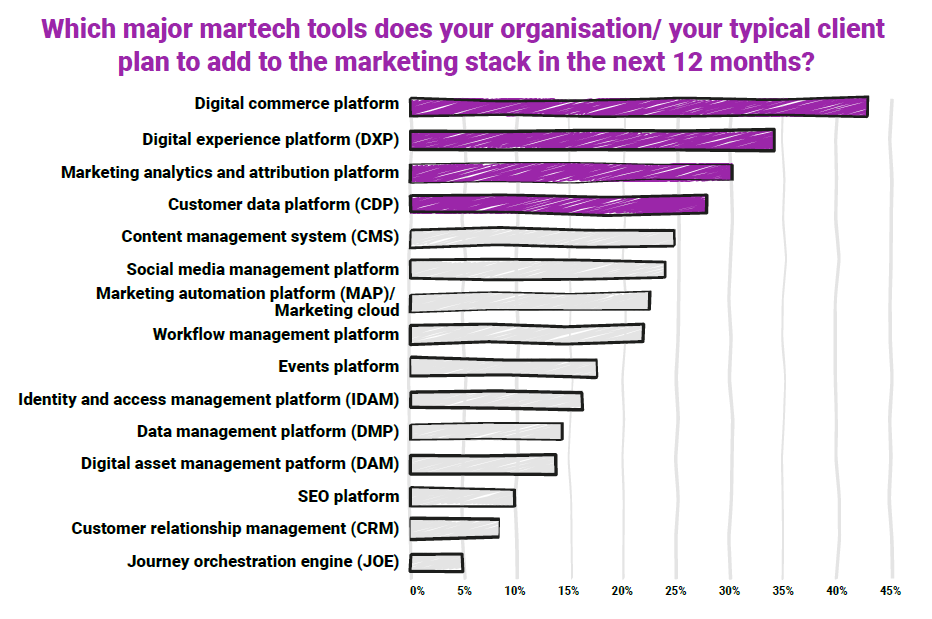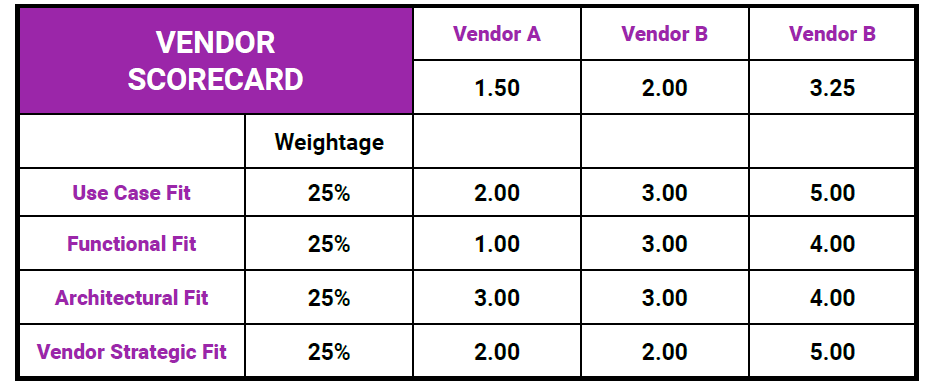Workflow Management Best Practice Guide
Your step-by-step guide to workflow management technology
As organisations grow, they face the challenge of managing, maintaining, and scaling workflows. This is no easy task in a world that finds a majority of people hybrid working between home and office. Increasingly, people and companies are operating entirely remotely.
Inefficient workflow management can also be rooted in siloed organisational structure, poor corporate culture and high employee turnover which can make it difficult to codify and diffuse knowledge to new colleagues.
Research by McKinsey reveals that many decisions and processes require less than half the steps executives think are necessary. (1) Savvy business leaders understand the need to continually review workflows, and incorporate automation to improve productivity and impact.
As organisations embrace the need for better workflow processes as a competitive advantage, they’re adding workflow tools and technology to their tech stack. In fact, workflow management technology is now a global market that’s projected to exceed $55 billion by 2028. (2)
This post-pandemic period, where companies are emerging from a period of rapid change and adaptation presents an opportunity for leaders to rethink the way their organisations work and with a view to becoming more flexible and resilient.
In this guide, we’ll take a deep dive into the growing market of workflow management tech. We’ll focus on what it is, how it works, and why now is a good time to invest in a robust workflow management solution.
What is Workflow Management Technology?
Workflow management technology (WMT) is any tool that provides the infrastructure for the planning, organising, coordination and monitoring of a set of tasks. WMTs are focused on both improving and automating workflows to increase productivity and efficiency.
In this guide, we use ‘workflow management technology’ as an umbrella term that includes software, platforms, standalone tools/apps that help companies manage a set of tasks in a workflow to achieve a goal.
Workflow Management Tech: Key Functions
Overall, workflow tools help to coordinate daily work tasks, ensuring that business processes are properly implemented. Overall, they provide an environment which allows monitoring and evaluation of processes.
Workflow management solutions contain the following key functions.
- Intuitive workflow design: This is a low or no code feature that enables users to design workflows typically via a drag-and-drop interface and/or WYSIWYG editor which requires limited tech skills. Forms can be created/used to capture data and workflow sequences for each workflow.
- Task management: WMT includes task management features which give users the ability to create standard task lists, assign tasks, track real-time task completion progress, and attach additional files/information to tasks for further clarification.
- Approval notifications/process control: Approval process control allows users to manage approvals across the workflow continuum, notifying responsible team members of approvals which helps eliminate bottlenecks and keep the workflow process moving.
Many workflow tools also give users the ability to assign access control to workflows based on group or individual hierarchies which allows external stakeholders (e.g., vendors, consultants, etc.) to access workflow tasks. - Calendar and event management: Syncing, sharing, and tracking due dates is an important WMT feature, enabling teams to coordinate deadlines and milestones for key tasks or events within a workflow. Integrations with popular calendar apps like Outlook and Google Calendar enables team members to easily sync their calendars with events that correlate to a given workflow in the group calendar.
- Reporting and analytics: WMT typically includes some level of performance reporting and tracking. This enables managers to monitor workflow processes and identify issues that cause delays, bottlenecks, and contribute to inefficiencies. Many tools provide granular reports that show individual or team level performance so team leaders can identify and understand problems in a workflow and thus revise/optimise it to achieve better efficiency.
- Automation: WMT automates different stages of the workflow process such as approvals by enabling team members to submit approval requests, set deadline reminders, send notifications, and more. For example, email requests that previously entailed many responses and forwarding (e.g., to-do emails) can be managed using WMT and easily shared with alerts set to automatically notify team members of changes.
Why do I need workflow management technology?
Adoption of workflow management tools has the potential to deliver a range of benefits for your business, including:
- Reduce reliance on spreadsheets and paper-based processes. WMT eliminates overdependence on clunky spreadsheets and can help you move from a paper-based, to digital workflow approach.
Everything you need to manage tasks is contained within the workflow platform. Integrations expand capabilities so you can continue to leverage existing tools from your tech stack into your workflow process (e.g., Google sheets, Dropbox). - More efficient management of distributed workers (e.g., contractors and gig workers). Many companies use contractors and gig workers to fill in resource gaps and expand capabilities. WMT enables these workers to stay connected to internal teams, easily share and obtain information, track hours, and remain accountable.
- Improve communication. If the main systems or teams that your organisation relies on don’t communicate well with one another, then you likely need WMT. Many WMT platforms have built-in team collaboration tools like in-app messaging, approval and proofing functions, and threaded message boards that facilitate communication.
Shared calendars, timelines, and integrations with real-time meeting apps like Zoom bring systems and teams together more easily than standalone tools. - Help employees to understand what’s expected of them. Mapping workflow processes not only helps document each milestone in a multi-step process, it ensures that employees understand how to complete a task and what their role is in each workflow.
WMT helps eliminate ambiguity when it comes to who is responsible for what. It keeps team members on the same page regarding what needs to be done, when it needs to be done, and by who. - Happier employees. If your employees are spending time on data entry and repetitive tasks which must be processed manually, you’re not using their time efficiently.
Repetitive tasks eat up at employee time and increase workload to the point of burnout. In a survey by WMT provider Smartsheet, 40% of workers said they spend at least a quarter of their work week on repetitive tasks and nearly 70% said automating these tasks would reduce wasted time and help them recover hours. (3) - Reduce the number of unfinished projects. WMT is built to manage the workflows necessary to finish tasks. Tools like timelines, project milestone tracking,
Gantt charts, and to-do lists help you keep track of multiple projects and quickly troubleshoot bottlenecks that cause delays and confusion. Logs make it easy to hand off a project to a new team member if someone is out and maintain a history of each project so that effective workflows can be replicated. - Improvement of cash flow issues. Collecting and processing payments efficiently is critical to keeping business operations running. If payments aren’t getting processed quickly, payments are getting lost, and tracking account activity is becoming a nightmare of delays and confusions.
WMT can help improve cash flow issues by streamlining and automating the accounts receivable process. - Avoid recurring issues with scheduling and payroll. Recurring problems like overscheduling, missing payroll deadlines, missed meetings, and other logistical errors are a clear sign that you need a more streamlined process and better ways to communicate.
Workflow management can help you resolve these common issues with shared schedules, automated alerts, and time tracking tools.
Advantages of Workflow Management Tech
|
Increased workflow efficiency |
Define workflow tasks and collaborate across distributed teams and employees |
|
Better time management |
Standardise workflows. Centralise key information. Facilitate better communication. Automate repetitive tasks, approvals, document sharing, report generation, and delegating steps.
|
|
Quickly change and adapt new workflows |
The ability to optimise workflows translates to greater business agility, resilience, and flexibility. |
|
Effectively monitor outcomes |
Reporting and analytics provides workflow transparency across teams and business units. |
|
Audit and update workflows |
Identify opportunities for improvement and redesign problematic workflows. |
Where Workflow Management Sits in the Tech Stack
Since WMT touches all departments and teams in an organisation, it should be considered a central component of your tech stack—the “Working Management” layer, as illustrated in Figure 1.
Figure 1: MarTech Alliance’s Foundational Tech Stack

It’s highly likely that your organisation is already using one or a number of workflow management tools—Slack, Trello, Asana, Calendly, and Google Workspace are examples of popular WMT.
In our 2021/22 Martech Report, about 30% of UK businesses we surveyed said they added workflow management platforms in the past 12 months. (4)
Figure 2: Major martech tools UK organisations added in the last 12 months (4)

Roughly 22% of respondents said they planned to add workflow management platforms in the next 12 months.
Figure 3: Major martech tools UK organisations plan to add in the next 12 months (4)

How do I choose the Workflow Management Tech that’s right for me?
Determining the right WMT tool for your organisation depends on your specific needs and an understanding of how the technology aligns with your goals.
Factors to consider include core functions, ease of use, support, security, scalability, and usability across devices.
When assessing WMT, look for a solution that helps address the following common needs:
- Increasing employee empowerment. WMT enables employees to understand where they fit within a given workflow, exactly what needs to be done, and helps them resolve issues by making the workflow process transparent.
- Reducing dull, repetitive tasks. Automating rote tasks, breaking free from long email chains, and easily aligning calendars frees up valuable time and improves employee productivity.
- Standardising workflows. Eliminate knowledge bottlenecks that happen when only one person knows how to do something, share workflows easily, and maintain a record of how to achieve goals so they can be easily replicated and maintained over time.
- Improving auditing capabilities. Monitor workflow effectiveness and efficiency so you can identify cumbersome or outdated workflows. Use this information to streamline inefficient workflows (or ditch them altogether and create new ones).
- Facilitating better time management. Centralise key information (files, deadlines, to-do lists) in one place, assign hierarchies to team leaders, communicate more efficiently with internal and external stakeholders, and use automation to eliminate repetitive tasks.
- Integrations with existing tools. It’s important to look at how workflow tools will integrate with existing business software to create a more connected workflow/project management system. For example, WMTs such as Asana have integrations with Microsoft Teams, Salesforce, Google Drive and other common tools.
It’s also important to think about the organisational changes and processes you may need to put into place in order to make the most of WMT. Things to consider include:
- Evaluate current workflows. WMT can help you better understand, manage, and streamline the tasks inherent in each workflow, but it’s important to recognise that trying to layer a new technology on top of an inefficient workflow can slow things down even more.
- Factor in time and resources for training. WMT is not a quick fix, and you’ll need to ensure that employees have the training to understand new systems, and that you have buy-in from all teams and stakeholders in your organisation.
- WMT does not replace human connection (nor should it.) Automated alerts, message boards, and direct messaging can become overwhelming if not mitigated with a strong process and focus on fostering real human connection.
WMT can help you become more efficient and button up problematic workflows, but it’s most beneficial when it’s implemented with a workflow approach that uses the tech to enhance the value of human connection.
For each of your business use cases you will want to document specifically what you want WMT to help you solve. Below is a framework that may help.
|
Business use case area |
As a <type of user> |
I want <some goal> |
So that <some reason> |
|
Streamline the process of onboarding a new client. |
Sales Director for marketing agency |
I want to make the process of onboarding a new client simpler for the client and the agency. |
So that I can reduce time from initial approval to a signed project by 25%. |
You can make the above framework more relatable by telling a meaningful story, as follows.
Alison, our agency’s Sales Director, is frustrated with the complex onboarding process for new clients. She wants to reduce the time from initial client approval to having a signed contract by at least 25%.
Alison recognises that the existing workflow for onboarding new clients is cumbersome, with bottlenecks occurring due to poor communication, difficulty finding the right information, and logistical issues with scheduling things like contract review and kickoff meetings.
Talia wants to implement WMT to map the existing workflow process for onboarding new clients and identify bottlenecks in the process which can be improved, automated, and streamlined. She also wants a central place where external team members can directly communicate directly with the client that minimises long email chains. The tool must integrate with existing apps used by the agency (e.g., Slack, Dropbox, and Calendly) and be easy to use from a mobile device.
Defining your use cases is key to your RFI/RFP documents proving meaningful to WMT vendors. It helps them understand your exact requirements and showcases how their solution can play out when they demo their platform vs providing a generic overview of capabilities.
Creating a vendor scorecard to mark each vendor is the next step.
|
You may assess each business use case against: |
● Key functionality in the scenario demonstrated ● Ease of implementation ● Alternative approaches demonstrated/ explained ● Ease of use - Admin experience for managing the use case ● Positive impact on end users ● Goals are met |
Beyond your business use cases you also want to assess technical architecture fit as well as areas such as product roadmap, training and support, partnership network etc.
We’ve created this basic scorecard with suggested weightings to get you started. It doesn’t cover everything but our Essentials of Marketing Technology Course contains a much more detailed worksheet to help you evaluate vendors as well as a comprehensive guide to help you with the process of vendor selection.

With your use cases documented, vendor scorecard defined, and RFI/RFP created
It's time to start connecting with vendors.
Creating a short list based on your company profile and preference is a good starting point; WMT capabilities and ratings, B2B or B2C focus, functional specialism, industry and company size match.
As you progress to chatting with vendors, we would recommend you:
- Take your time & prepare – Don’t rush the process. Make sure you have done your research to better understand the WMT space. Ensure you have details of your workflow management needs available and your vendor scorecard and questions.
- Run a custom demo – Make sure vendors have your business use cases and business background weeks before your demo so they can sufficiently prepare and tailor what they present so you can make a fair assessment.
- Get into the detail of your expectations around workflow management and how that influences organisational efficiency. Get into the nuts and bolts of your needs/goals to really assess the ease, speed and cost of getting WMT in place.
- Review vendor case studies – Ask for customer case studies showing key results of their platform.
- Assess direct and indirect vendor costs – Ensure you get all costs from vendors from data hygiene and onboarding, custom integrations, consulting, training and any other area beyond the platform licensing itself.
- If the vendor doesn’t cover all areas, ensure you have forecast what additional investment is needed. This could be consultancy to manage your content modelling or an internal new hire such as a lead developer to be the platform super user.
- Get vendor customer references – and ideally direct access to chat with some of their clients.
Summary
The need for workflow management solutions spans all industries and business from healthcare to finance to retail to IT (and on and on). Globally, the WMT market is expected to exceed $55 billion by 2028. (5)
Automation, distributed workforces, and the growing adoption of digital transformation initiatives that focus on enhancing (or reinventing) the foundational tech stack are all contributing to this growth.
Workflow management tools empower employees to manage tasks and workflows in much more collaborative and effective ways. They empower managers to oversee their workflow processes, identify issues, and optimise performance across whole teams and individual team members.
WMT translates to increased productivity which has been shown to increase revenue by nearly 40% and reduce costs by 30%. These tools can contribute to a 30% reduction in the time workers spend on document-intensive processes and decrease errors by up to 40%. They make the workplace experience better for everyone involved. (6)
Citations
1 Source: Aaron De Smet, Chris Gagnon, and Elizabeth Mygatt, ‘Organizing for the future: Nine keys to becoming a future-ready company’, McKinsey, January 11, 2021. (https://www.mckinsey.com/business-functions/people-and-organizational-performance/our-insights/organizing-for-the-future-nine-keys-to-becoming-a-future-ready-company)
2 Source: Research & Markets, ‘Global Workflow Management System Market Size, Share & Trends Analysis Report 2021-2028’ BusinessWire, November 30, 2021. (https://www.businesswire.com/news/home/20211130005547/en/Global-Workflow-Management-System-Market-Size-Share-Trends-Analysis-Report-2021-2028---ResearchAndMarkets.com)
3 Source: Katie Beloof, ‘How Much Time Are You Wasting on Manual, Repetitive Tasks?’, Smartsheet, 2021. (https://www.smartsheet.com/content-center/product-news/automation/workers-waste-quarter-work-week-manual-repetitive-tasks)
4 Source: MarTech Alliance / Moore Kingston Smith, ‘The Martech Report 2020/2021’ MarTech Alliance, October 2021. (https://www.martechalliance.com/martechreport)
5 Source: Grand View Research, ‘Workflow Management System Market Worth $55.35 Billion By 2028’ Grand View Research, July, 2021. (https://www.grandviewresearch.com/press-release/global-workflow-management-systems-market)
6 Source: Wolters Kluwer, ‘The future of workflow is here’, Wolters Kluwer, February 18, 2020. (https://www.wolterskluwer.com/en/expert-insights/the-future-of-workflow-is-here)
